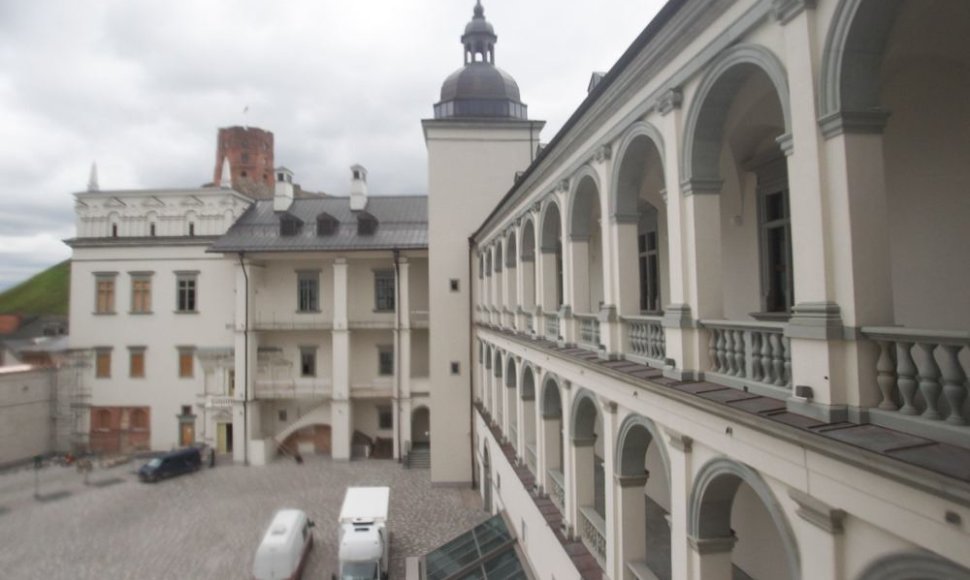“Perhaps these two should better be moved to the lower shelf?” wonder five archaeologists staring at museum exhibits displayed behind a glass case. Trivial though this may sound for a layperson, for them it is a matter of great significance.
They are the ones who spent years digging the territory of the Palace of the Grand Dukes, the royal residence of the rulers of The Grand Duchy of Lithuania which was completely demolished in the early 1800s and reconstructed from scratch over the last decade. Many valuable finds have been unearthed in the process, conserved, restored, meticulously described, and prepared for a display in the National Museum that will be housed in the Palace.
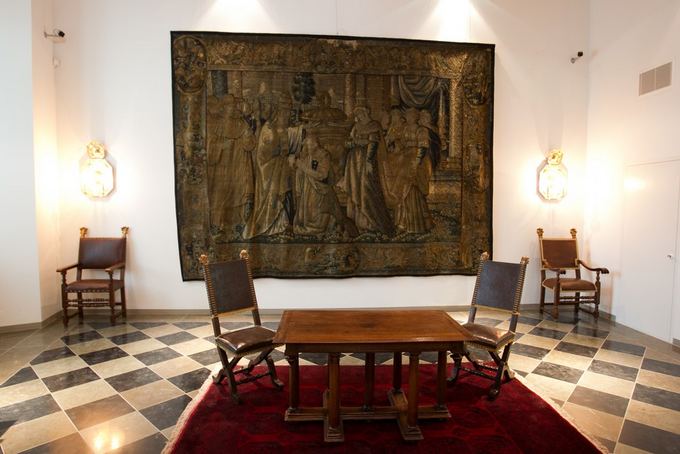 |
| Valdovų rūmai |
The display crowns over two decades of hard labour by archaeologists, historians, art historians, restorers. Stove tiles, crockery, coins – everything has been minutely recorded and arranged.
“Almost everything is already on display, we recently received the last pieces of tapestry from Poland. We still need to take care of labels, information stands, adjust lighting. We will manage in time,” says Dr. Vydas Dolinksas, director of the National Museum Palace of the Grand Dukes, and a wide smile appears on his rather tired-looking face.
With the grand opening scheduled for Saturday, Dolinskas maintains Olympic calm. His assistants, meanwhile, engage in a lively “what if” discussion around a circular table. Their biggest concern seems to be how to avoid having venerable guests crowd up. How to make sure that visitors move quickly from one hall to the next and at the same time not feel pushed? “We need to be polite. There will be elderly people, too, who will take their time, make stops to better inspect the exhibits, perhaps even have a discussion.”
On Saturday, the Palace will host Lithuanian officials as well as a number of foreign guests. The latter will probably never know the controversy that has been accompanying the reconstruction works since 2001, when the Lithuanian parliament voted to revive the structure obliterated two centuries ago. Many still doubt if Lithuania needs such a building, if the hundreds of millions spent on construction and museum pieces would not have been better used elsewhere. Finally, there was also the scandalous ruling by the State Control and Public Procurement Service to the effect that the money had been wasted and a subsequent decision by prosecutors that no crime had been committed.
“Despite slander and attacks by the yellow press, the public opinion about the Palace remains positive,” Dolinskas says, quoting a survey conducted by market research company Vilmorus and the Institute of Sociology.
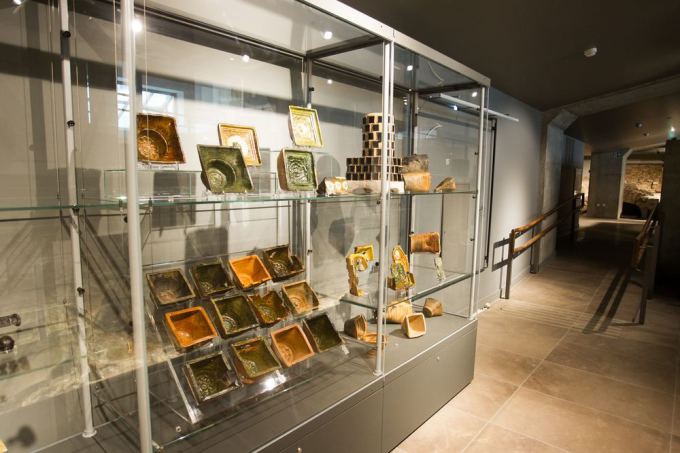 |
| Valdovų rūmai |
Respondents were asked to describe what the Palace of the Grand Dukes stood as a symbol for. 11.9 percent said it symbolized corruption and personal gain; 9.6 percent did not associate it with anything, while 80 percent thought the Palace was a symbol of Lithuania's statehood and historic heritage.
True, many passers-by still shrug when they see the massive complex that rose at the side of Vilnius Cathedral. They say they do not know what purpose it is intended to serve – a museum to house highbrow art or an institution to cater for the needs of the public?
In the run-up to the grand opening of the Palace, 15min talks to Vydas Dolinskas, director of the National Museum Palace of the Grand Dukes of Lithuania.
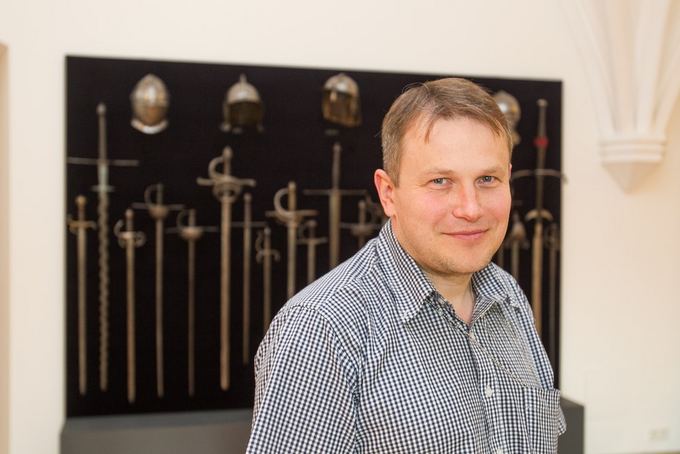 |
| Vydas Dolinskas |
– The official opening ceremony of the Palace coincides with another big event – the launch of Lithuania's presidency over the European Union Council. A double celebration?
– It is quite symbolic that the reconstructed Palace of the Grand Dukes opens its gates in the context of the presidency.
Moreover, the presidency is an excellent launching platform. Politicians and diplomats, tourism professionals agree that you cannot buy the publicity that Lithuania and the Palace are going to get during the presidency. Therefore the opening of the reconstructed Palace coincides with Lithuania's return to active European politics and represents historic continuity of Lithuania's role.
– The big courtyard, spacious halls, rich furnishings, and the exposition of archaeological finds shows a less familiar, aristocratic side of the history of Lithuania, which usually perceived as a nation of farmers.
– I do not mean to insult anyone, but I daresay that the Palace of the Grand Dukes, in its stately and ethnocultural meaning, is the most significant object in Lithuania. It is a perceivable, tangible sign of the presence of our state and nation in Europe and history.
After all, for several hundred years, the Palace of the Grand Dukes was a centre of the entire state. Speaking in modern terms, it housed the president's office, the government, parliament, ministries, the bank, courts, the library, the archive, the theatre, the university, and other institutions of state and culture. Unique finds as well as the display of purchased and donated exhibits will tell the story of how court life and the state itself developed over centuries. It is here that one can best see what Lithuania and the Lithuanians were – historic or ethnic, how they lived and what they meant for Europe.
Do you know what is the greatest difference between us and the Poles in terms of historic consciousness? For the Poles, history and cultural heritage is and has always been the basis of national identity and source for revival. For us, language was a substitute for history.
If you asked any Polish school student about the country's rulers, he'd be able to name all of them in chronological order, starting with Jogaila. Well, they might miss Henri Valois. Try the same in our schools...
The History of Lithuania between Vytautas Magnus (15th century) and Jonas Basanavičius (late 19th century) used to be a blank page for us, but now, within the auspices of the Palace, we can fill it in, domesticate our history, make it our own, and see its continuity.
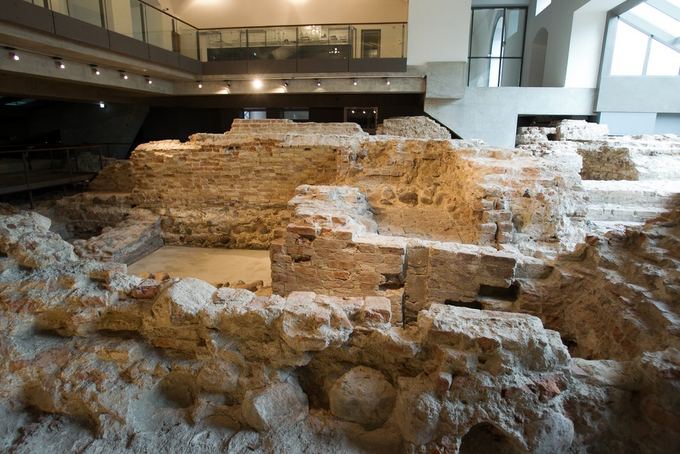 |
| Valdovų rūmai |
– In other words, the Palace of the Grand Dukes is a monumental argument that Lithuania is not a state that came into existence in the 20th century?
– I heard with my own ears how tour guides would tell foreign tourists about our former power, about a country “from sea to sea.” However, as long as we only had the remains of Gediminas's Castle on the hill to show for it, no one gave much credit to our tradition of statehood since the 13th century, I could see it in their eyes.
Now, however, no one will doubt that Lithuania is more than 700 years old.
If we wish to avoid mistakes, today and tomorrow, and keep our identity in the globalized world, we must nurture our historic memory, pride in our nation, its creative capacities. And what is a better venue for that than here?
The palace vaults contain the best-preserved 13-century stonework. This was the first and only stone castle in the Lithuanian lands at the time. The nearest stone castles were in Grodno and Polotsk – but these belong to the heritage of Kievan Rus.
Twenty years ago, when I was studying in Berlin, one famous historian of Medieval Europe flipped through a photo album of Lithuania and was surprised that our architectural landscape was very European, not dominated by onion-shaped domes. In Europe, it is still not a matter of course that we should not be seen as North or Eastern Europe, but rather part of Central Europe. That we are much like Czechs with their Prague, like Germans (of Saxony) with Dresden, like Austrians with Vienna. We are neither Moscow nor Stockholm. Our history, heritage, national character and sensibilities have been shaped by the baroque tradition of Catholic Central Europe.
– What programme are you planning for the opening of the Palace on 6 July?
– The programme is made up of two parts. The opening ceremony is scheduled for 2 PM on 6 July, the national holiday. There will be few official speeches, no more than 15 minutes. But there will be plenty of spectacle and music – this is how we're planning to introduce our history, cultural heritage, ties with Europe, the significance of the residence of the grand dukes and its reconstruction. This part will last up to two hours and will be broadcast live on national television.
After the opening ceremony, we'll invite the guests to see the exposition. They'll have about three hours for that.
At 9 PM, in the Grand Courtyard, the Lithuanian National Opera and Ballet Theatre is giving a concert – on overview of the operatic genre from the early baroque operas to contemporary dance. Once again, it will focus on the Lithuanian context. By the way, opera performances in this palace were held even before in Paris or London. This will be an outdoor event, so let's pray to Saint Casimir, who used to live in the Palace, for fair weather.
– Isn't it probable that ordinary Lithuanians will only be able to visit the Palace after six months, during which it will be reserved for presidency events?
– The Palace of the Grand Dukes will host over 40 important presidency events. However, we managed to agree with the Foreign Ministry to give due attention to both presidency and its function as a museum. The museum will welcome visitors during its opening hours, while evenings will be reserved fro representational cultural events related to the presidency. Neither of these areas will be given absolute priority, we value both our visitors and EU guests equally.
We will welcome visitors as early as Sunday, 7 July, the following day after the opening. Full-fare entrance will be 10 litas (3 euros). However, we'll be flexible, for example, offering special family fares and other discounts.
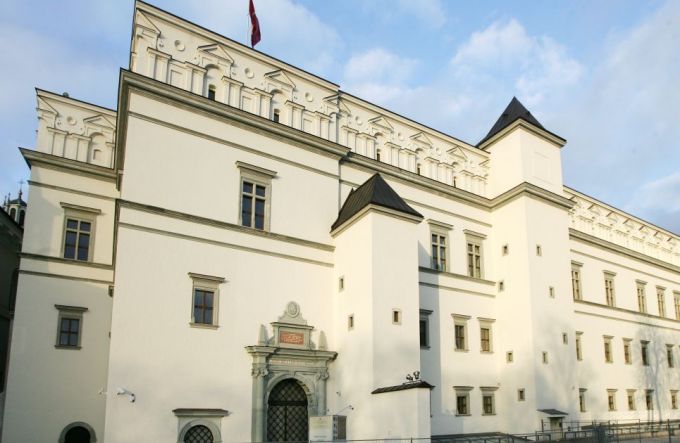 |
| Valdovų rūmai |
– Have you felt any interest from foreign visitors? Any bookings for tours? How many tourists do you expect to receive per year?
– Foreign reporters have been showing interest in us for years. The Palace of the Grand Dukes is included into the top 100 list of most successful reconstructions in Europe – he had an entire spread in the Munich expo catalogue.
Press in Poland, Italy, Germany, Belarus report on us and regard the Palace as one of the most successful heritage presentation and reconstruction projects. Architects of the Royal Palace of Berlin even made adjustments to their project after examining ours. So the world observes and appreciates what we're doing here.
We do have bookings for tours, but tourism agents will pay more attention to the Palace next year, since they plan their trips ahead. However, preliminary booking figures show that the Palace of the Grand Dukes is fated for popularity.
In Lithuania, as well as in some museums abroad, 50 thousand visitors a year is considered a very decent figure. We expect to receive 100 thousand or even more, assisted by some 150 city guides who took part in our training course.
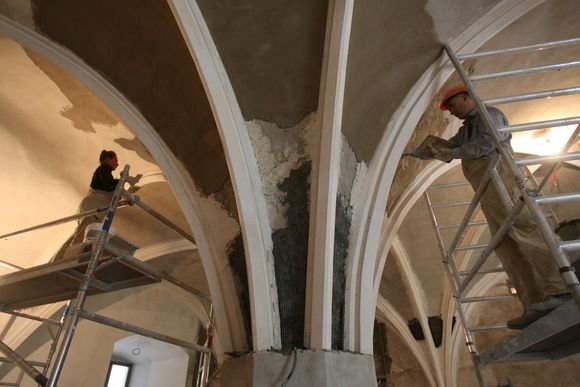 |
| Reconstruction took over ten years |

